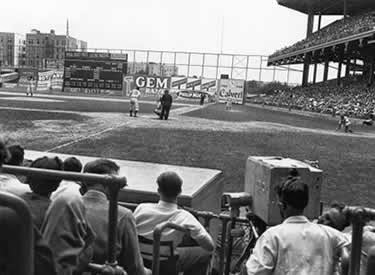Do you remember life without television? It did exist, you know. For some, it has always been a part of everyday existence so even considering a day without TV is totally unrealistic. Back in the day to watch any type of sports competition required tickets with butts in stadium seats rather than on couches or recliners.
This Day in History: August 26, 1939
 |
| Brooklyn Dodgers and Cincinnati Reds face of on August 26, 1939. (Credit: MLB Photos via Getty Images) |
In order to convince skeptical visitors that the television sets were not a trick, one set was made with a transparent case so that the internal components could be seen. As part of the exhibit, visitors could see themselves on television. After this formal introduction of television sets, they became widely available for the public. [Source: en.wikipedia.org]
A Bit of TV History...
Experimentation
with television first started in the late 19th century with color TV
being in development as early as 1897, but electronics were simply
not advanced enough at that point to make the process work effectively.
These earlier broadcasts were merely demonstrations still in the testing
stages. Another 30 years passed before anything like a successful
television
broadcast system was put together with color TV coming to fruition in
1928. But even then, it wasn’t until 1935
that the regular black-and-white broadcasts were being sent out,
and those only contained 108 lines per frame. This was the beginning of a
massive boom in broadcasting, and by 1950 there were 6 million
televisions in the United States alone. Back to the game...
 |
| Dodgers broadcaster Red Barber interviews Brooklyn manager Leo Durocher, August 26, 1939. (Credit: Sporting News via Getty Images) |
Dodgers radio commentator Red Barber stepped in as baseball’s first ever television announcer, using his trademark homespun style to give context to the still-limited coverage. Barber wore headphones so he could hear the broadcast’s director, but he later claimed that he effectively did the commentary blind. “I had to guess which way the camera was pointing, and I never knew for sure what was on the picture,” he recalled in his biography. “There was no monitor—this was years before anyone ever dreamed of a monitor.” (Source: History in the Headlines)



No comments:
Post a Comment